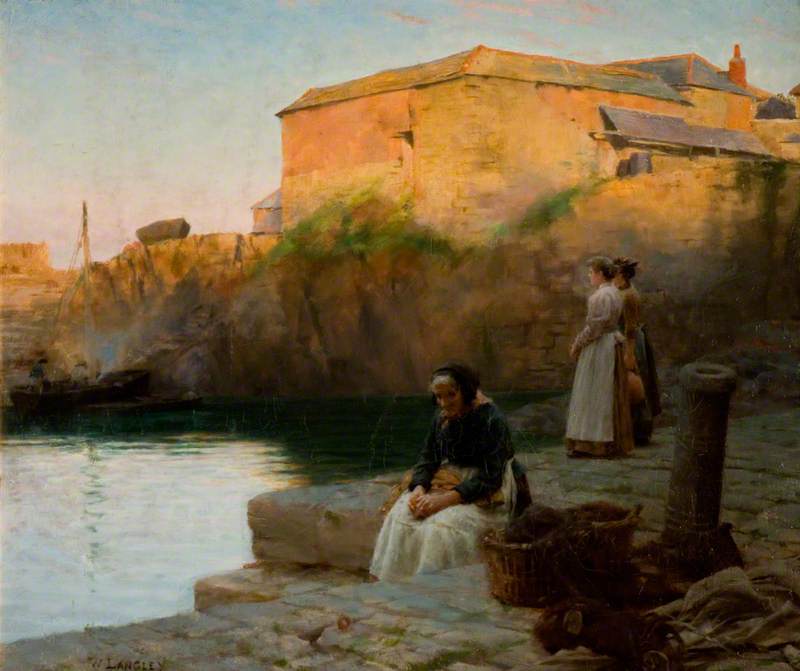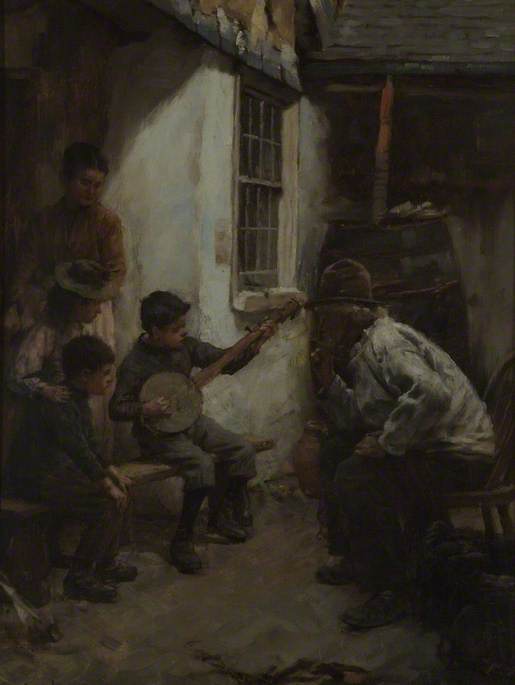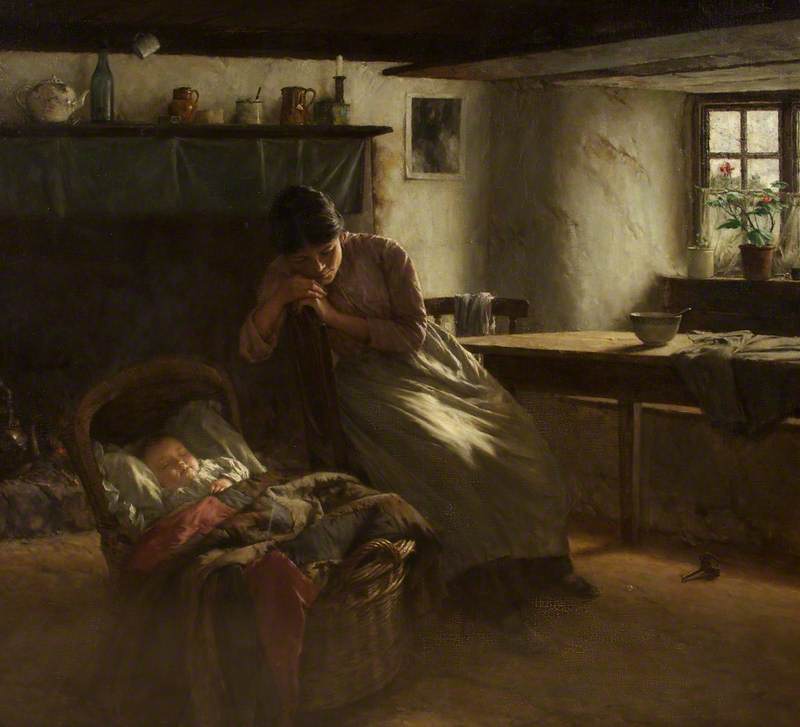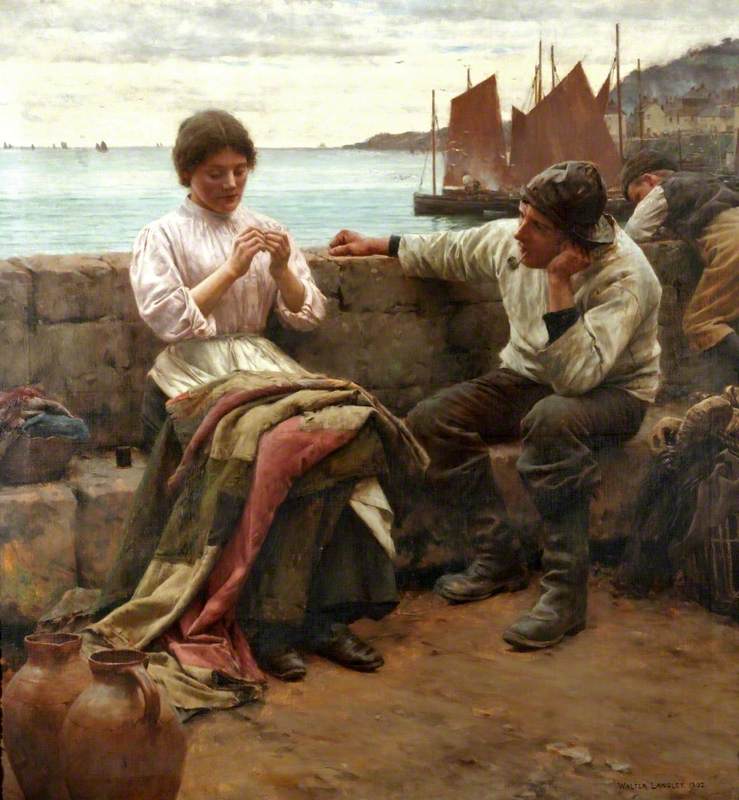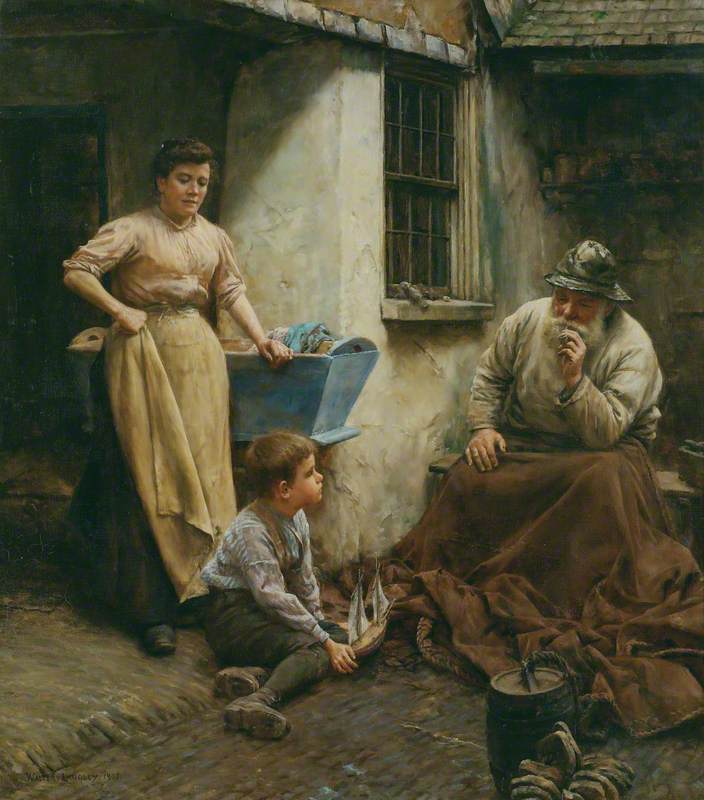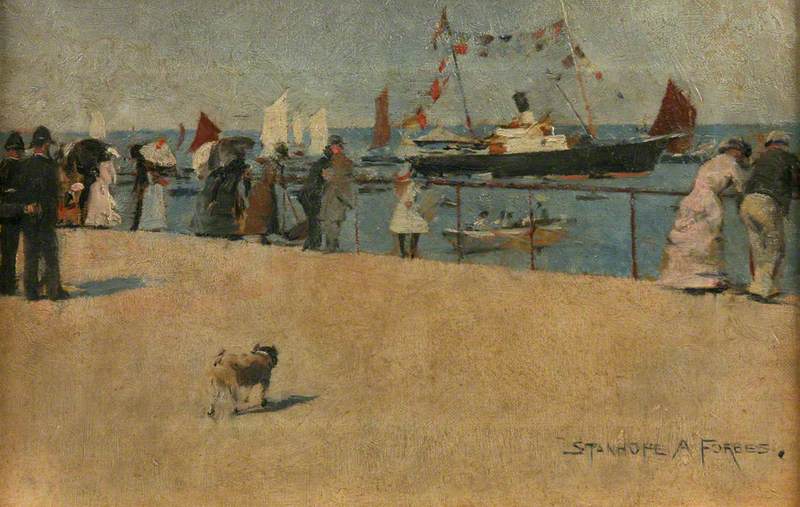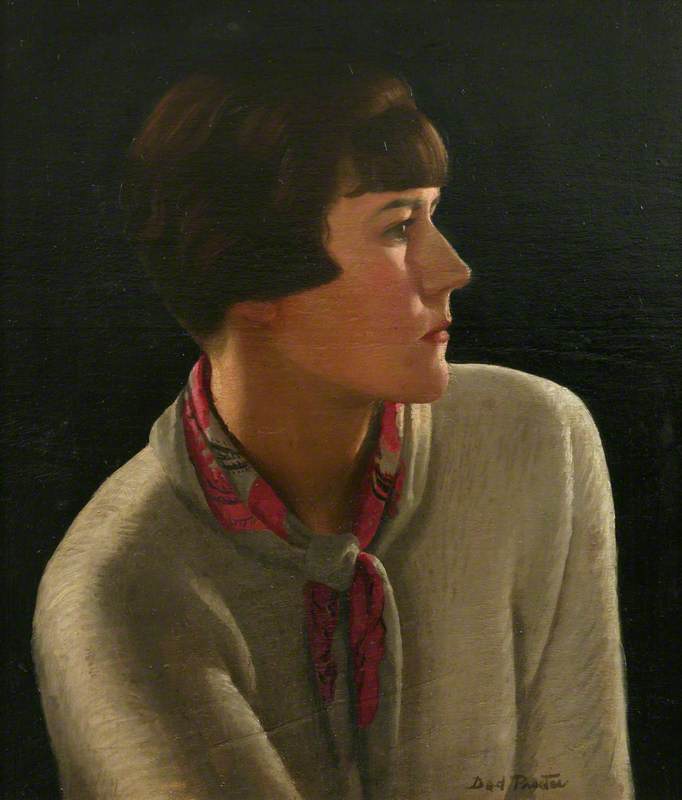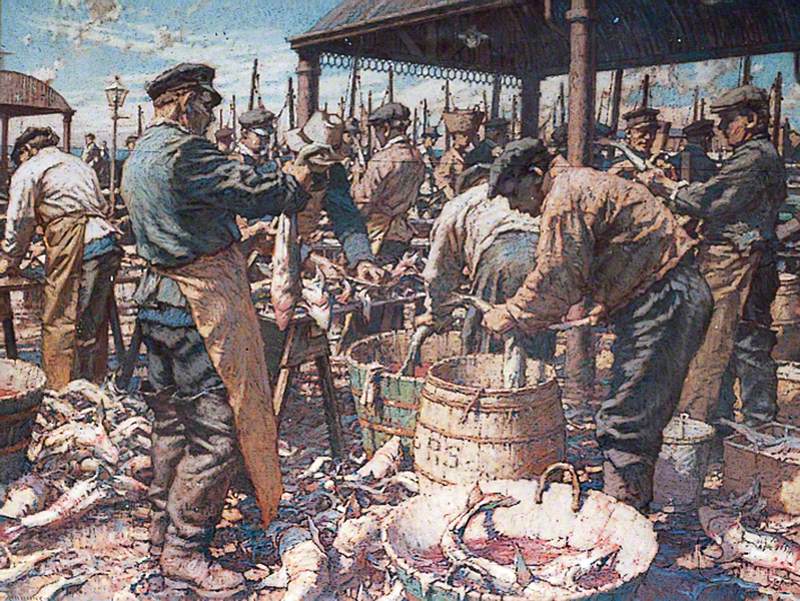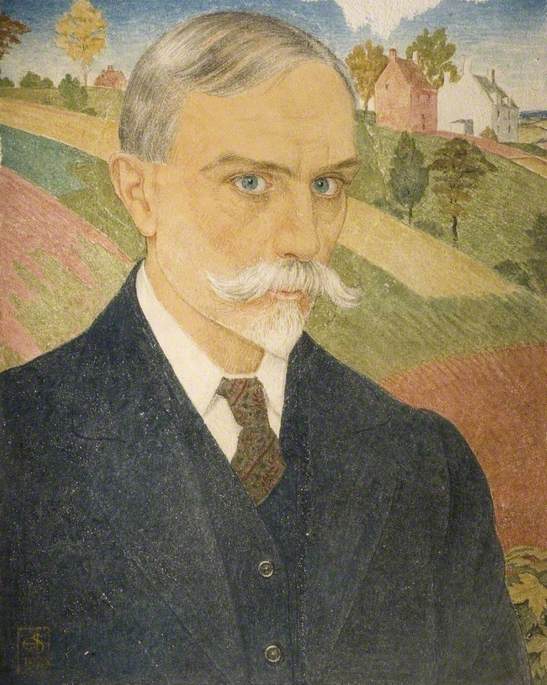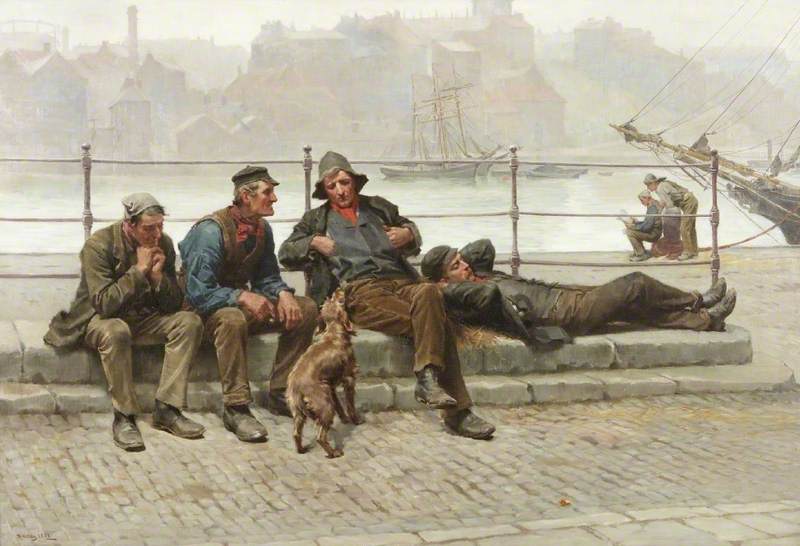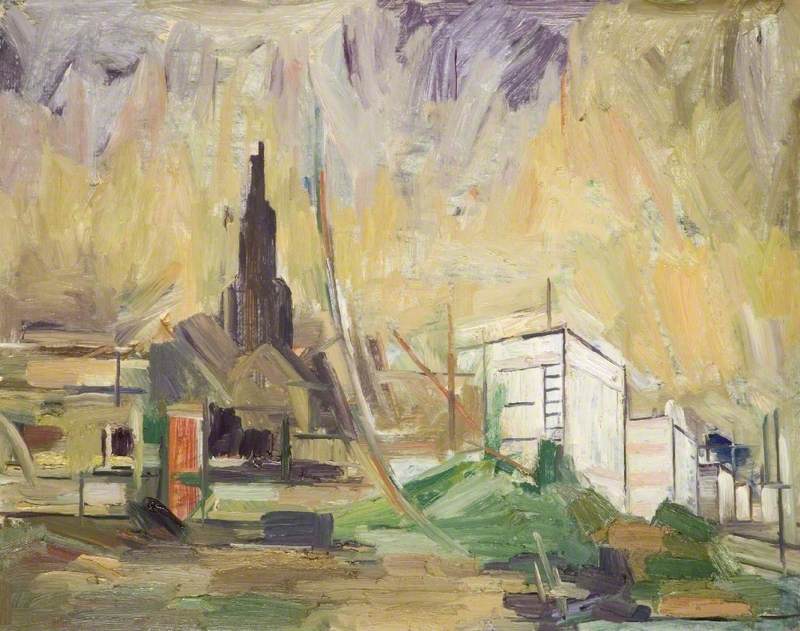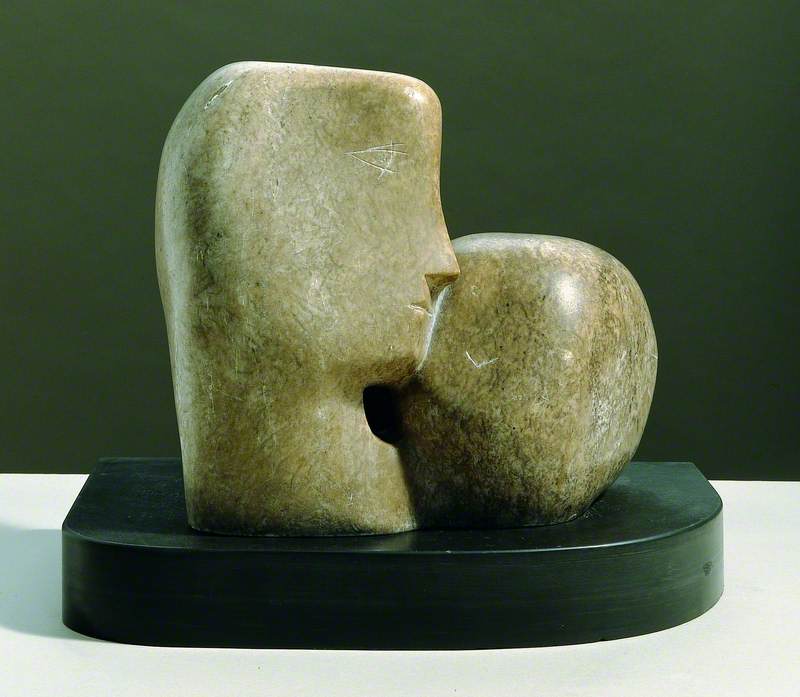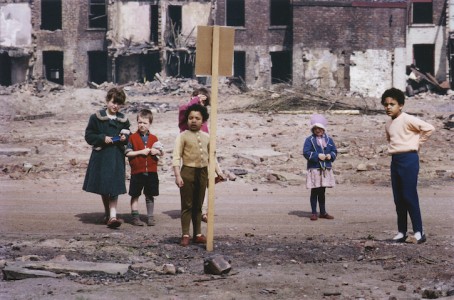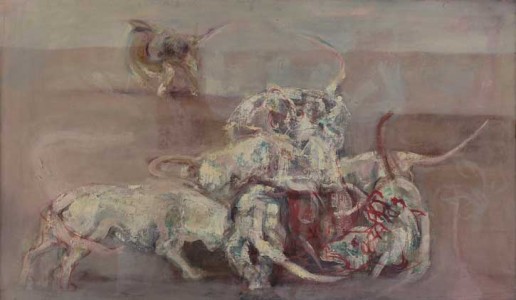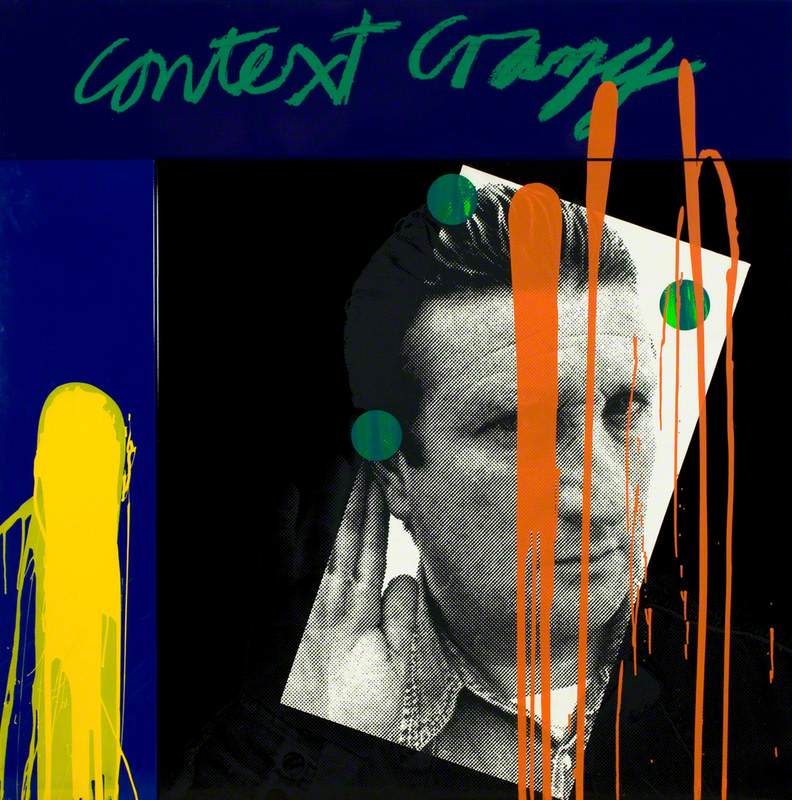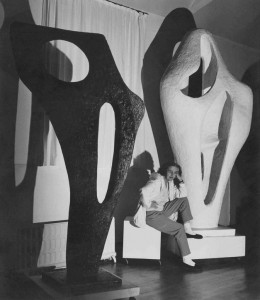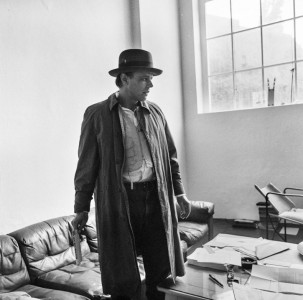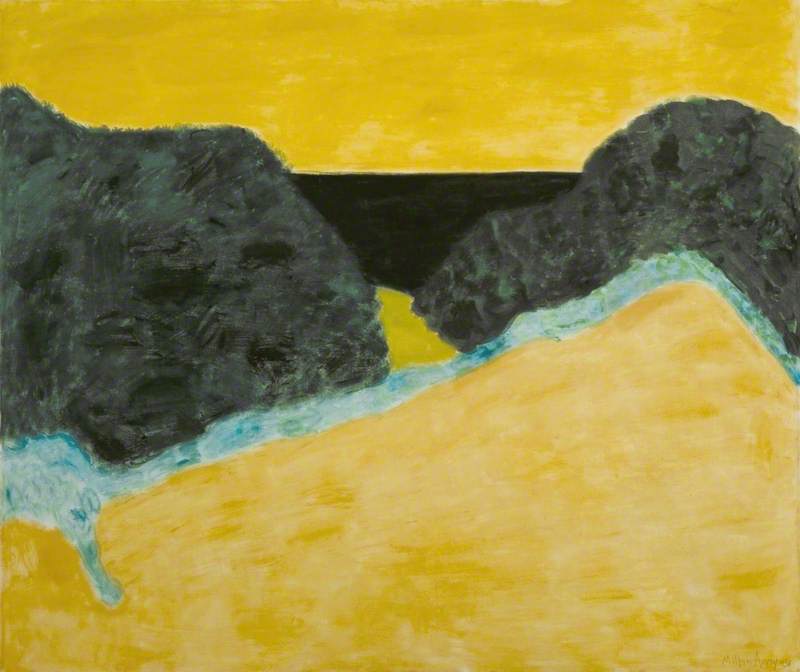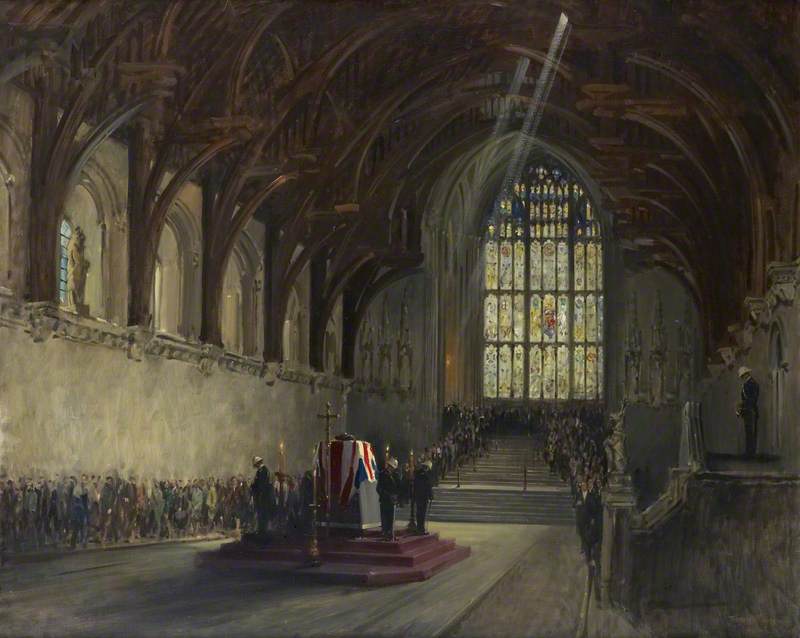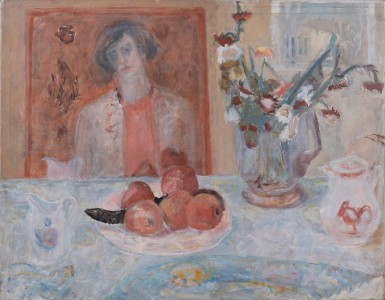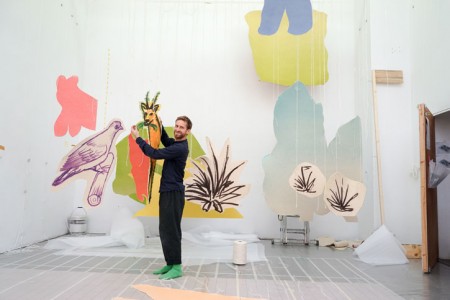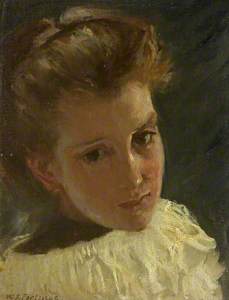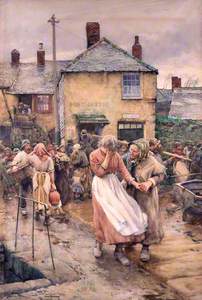Many decades before the emergence of the famous twentieth-century St Ives school of artists, which included Barbara Hepworth and Ben Nicholson amongst others, an earlier group of painters made west Cornwall their home. This was the Newlyn School, based around the south coast fishing village of that name, founded by among others, Walter Langley (1852–1922), the centenary of whose death is commemorated this year.
Coming from a disadvantaged, working-class background in Birmingham, Langley was drawn to Newlyn's fishing communities – both the men who put themselves in danger on the seas, but more strikingly their families living a precarious existence. Langley was the eighth of eleven children of William Langley, a tailor, and his wife, Mary Ann. Aged 10, he was enrolled in evening classes at the city's School of Design to learn the printing process known as lithography. Five years later he was apprenticed to lithographer August Heinrich Biermann.
Through this trade, Langley was introduced to watercolours, a medium that attracted him and later became key to his style. Aged 21, he won a scholarship to study at the National Art Training School in South Kensington, London, though did not immediately take up art as a profession. Instead, he returned to Birmingham to work in the jewellery trade until his interest in painting developed, replacing lithography which had already begun to decline in demand.
Langley increased his output once he married his first wife Clara in 1876, with the birth of a son, Walter Lorraine, the following year. In 1879, with the news that his spouse was expecting twins, he became a full-time artist.
At this time, Langley's home city was one of the world's key centres of modern industry. Seeking novel inspirations and influenced by the French practice of heading to rural or coastal areas to paint on location, the Midlander alighted upon Newlyn, already home to an artistic colony that at the time lacked anyone with his emerging stature.
In 1880, Langley paid a first, brief visit to the town on a sketching holiday, finding a contrast to urban life in the fishing and farming communities that lived in a manner seemingly untouched by the Industrial Revolution, though not without peril. That year, nearby Mousehole suffered the loss of the lugger Jane with all seven hands, including a boy, within sight of Penzance. Such events would have a profound effect on the artist.
Early the following year he set out on a painting tour of Brittany, where French artists congregated, to practice outdoor painting with fellow Brummie Edwin Harris, who eventually followed his colleague southwest.
Although rewarding, his period in France was unprofitable and later in 1881 Langley paid a return visit to Newlyn. Around this time Birmingham-based photographer and art dealer J. W. Thrupp, himself from a working-class background, saw Langley's work from the previous year. Believing Langley should reveal the lives of Cornish fisherfolk to the outside world, he commissioned him to return for a year.
Thrupp provided the sizeable sum of £500, which allowed Langley to rent a property in Newlyn, moving there the following year and setting up a studio. He became one of the first artists to settle in the town, leading many to name him a pioneer of its painting group.
The artists that congregated there sought to focus on social realism, painting from life, especially en plein air. Several came from Birmingham, including William John Wainwright and William Banks Fortescue. A key member of this group, Langley was known fondly for his banjo playing.
Early on in his career, Langley sought to represent the tough existence of the village's fisherfolk. Larger vessels would operate all around Great Britain, setting off in June or July and not returning until October, if at all. While male sailors were widely celebrated, women also played key roles, especially in processing the catch and preparing it for sale.
Asked by the writer for a Birmingham periodical why he tended to depict this, Langley replied his interest had always been with workers and toilers. He was also friends with radical MP Charles Bradlaugh, founder of the National Secular Society, his politics putting him at odds with more conservative Newlyn colleagues, such as Stanhope Alexander Forbes.
Langley was drawn especially to the wives and children of trawlermen, who often faced the grief of loss or the helplessness of waiting for the return of loved ones. Particular locations and figures recur in several Newlyn School works – cramped rooms become familiar with their low ceilings and mullioned windows, while one ex-fisherman's wife described her occupation in the 1891 census as 'artist's model'. Even the same outfits reappear, with Langley picking out how they were mended by thrifty owners.
Among the Missing – Scene in a Cornish Fishing Village
1884
Walter Langley (1852–1922) 
Training in lithography enabled Langley to capture fine details that brought added realism to his depictions of Cornish life. In Among The Missing – Scene In A Cornish Fishing Village (1884), the third in a series of watercolours depicting the industry's dangers, a list of men that have died at sea is displayed outside the local post office. For the same reason, he worked mainly in watercolours, often on large canvases, though the artist was also proficient in oils, as seen in his melancholy scene Never Morning Wore To Evening But Some Heart Did Break (1894).
'Never morning wore to evening but some heart did break'
1894
Walter Langley (1852–1922) 
Over time, his work became more sedate, the calmer feel typified by still waters and more clement weather, as in A Cornish Idyll (1902). The artist also followed the Victorian taste for allegories, using images to convey moral or philosophical concepts.
At first glance, A Chip Off The Old Block (c.1905) appears a cosy domestic scene, though its seeming representation of three generations of one family hints at the passage of time with past, present and future all present. Also, the child is displaying his own model boat to the grizzled seafarer, perhaps alluding to how skills are passed down through successive generations.
Langley returned to Birmingham between 1886 and 1887, during which time he was honoured with an exhibition of watercolours at the city's new Art Gallery, the year after its 1885 opening. Three years later he received international recognition through the award of a gold medal for work in the same medium at the Paris Exhibition. With the turn of the century came further visits to the continent for fresh subject matter. In 1904 and 1905 he visited the Dutch fishing village of Volendam, then the next year spent time in Mol, Belgium.
Yet Langley spent most of his life in Cornwall, dying in Penzance aged 69, where several of his works are now displayed by the town's Penlee House Gallery & Museum. Others are held in his native city, all showing a deep affection for the people that he lived among for so long.
Beyond representing the pathos of their hard lives, Langley showed the world that far from a backward community, here were literate people. At a time when campaigns were fought to widen voting rights, their artistic champion showed the folk of Newlyn were aware of national politics and international events. All the while, Langley was using his eye for detail to pursue social change.
Chris Mugan, writer
'Painting Between the Tides: Walter Langley' runs at Penlee House Gallery & Museum, Penzance, until 1st October 2022
